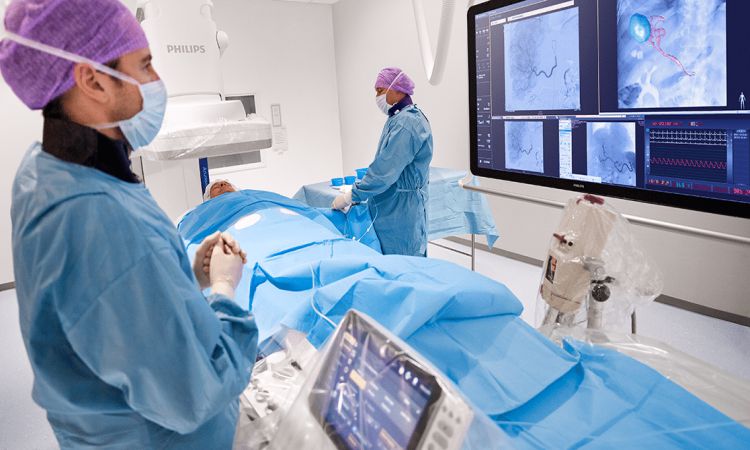 Vascular interventional radiology (VIR) has gained popularity for using less invasive methods to diagnose and treat vascular conditions. VIR procedures usually involve using a catheter (a thin, flexible tube) that the radiologists insert into the patient’s blood vessels through a small opening. It allows the therapists to access the vessels without needing open surgery. Whether there are vascular malformations or blockages, the treatment offers tremendous relief to the patients and helps avoid complications. Patients suffering from uterine fibroids, enlarged prostate, spider veins, and others can benefit from it. You may wonder what type of medical conditions it can treat.
Vascular interventional radiology (VIR) has gained popularity for using less invasive methods to diagnose and treat vascular conditions. VIR procedures usually involve using a catheter (a thin, flexible tube) that the radiologists insert into the patient’s blood vessels through a small opening. It allows the therapists to access the vessels without needing open surgery. Whether there are vascular malformations or blockages, the treatment offers tremendous relief to the patients and helps avoid complications. Patients suffering from uterine fibroids, enlarged prostate, spider veins, and others can benefit from it. You may wonder what type of medical conditions it can treat.
For help and consultation, you can reach out to Access Vascular Health: Michelle Maneevese, MD. Before this, let’s learn about a few above-mentioned medical conditions.
Table of Contents
Uterine fibroids
These non-cancerous growths may appear in the uterus or surrounding area. Leiomyomas or myomas can be some other terms for this medical condition. Anyway, fibroids can be tiny seed-like growths or big masses. Someone can have just one fibroid, while others may develop several. These usually affect the inner walls of the uterus or the outside area. They can also grow attached to the uterus by a stem-like structure. Although many don’t manifest signs, some can result in excess menstrual bleeding, pelvic pain, and urinary difficulties. Fibroids can affect a woman’s chances of becoming pregnant or cause miscarriage. If you have symptoms, a doctor may prescribe medications to help relieve them. In some cases, surgery can be unavoidable.
Apart from these, another treatment option can be uterine artery embolization (UAE). The minimally invasive method is not as risky as surgery and can be critical for those who want to conceive. It blocks the blood supply to the fibroids to affect their size. It is an outpatient process that does not require surgery. You can get discharged the same day, and healing can be faster than surgery. Some believe the patient should not worry about scarring or uterus damage.
Enlarged prostate
It refers to the condition of the prostate gland becoming abnormally large. The small-sized walnut-like gland sits right under the bladder. As a part of the male reproductive system, the gland helps produce and nourish sperm. Most men suffer from the issue of enlarged prostate as they age. Due to this condition, they can face problems with urination, fertility, and others. Severe cases can involve the risk of infection to the urinary tract. Kidneys can also be vulnerable. Treatments may vary as per the severity of the illness and the symptoms. In some cases, medication or surgery may be necessary.
Nowadays, few places also recommend prostate artery embolization (PAE), a less invasive procedure. The interventional radiologists may use a small catheter to reach the prostate arteries. Once the catheter is there, they can push some beads into the arteries to stop the blood circulation in the prostate. It causes the prostate to decrease in size and relieves urinary symptoms. Again, the treatment comes with a lower risk of complications and a shorter recovery time.
Regardless of your health, if you have symptoms and feel VIR can be helpful, don’t hesitate to explore the innovative treatments and procedures.






